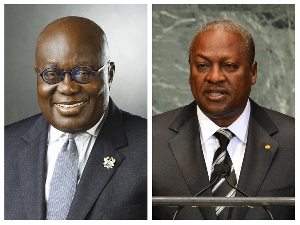The main objective of the AfCFTA is to create a single market for goods and services to facilitate the free movement of persons and investments and to lay the foundation for a Continental Customs Union.
The AfCFTA implementation plan is built around member states successfully undertaking activities and programmes to improve seven priority action clusters identified by the AU Action Plan for Boosting Intra-African Trade.
These action clusters are: trade policy, trade facilitation, procedure capacity, trade related infrastructure, trade finance, trade information and factor market integration.
The AfCFTA trade provisions are not limited to trade in goods. Its legal instruments cover trade in services, competition, investment and intellectual property rights.
Conditions for the successful implementation and maintenance of the AfCFTA will be wide-ranging, cut across multiple issue areas, and will range from the concrete to the abstract.
Political Leadership
While the free trade agreement has achieved the necessary threshold for implementation, the actual willingness to implement remains in the hands of member states and their leadership. The actual implementation of AfCFTA will primarily require strong political will to move the trade relationship forward.
Deciding to implement the AfCFTA comes with some risk. If a country is heavily dependent on intra-African trade tariffs for government revenue generation, a continental free trade agreement could significantly reduce government revenues.
While the analysis in this report suggests that countries most dependent on intra-African trade tariffs for government revenues will benefit the most by reducing their intra-African trade tariffs, this benefit accrues slowly, over years and even decades.
A shared political mindset should be fostered promoting continental economic integration—one that prioritizes shared economic gains at the expense of historical rivalries or relative economic gains.
As a continent there are significant long-term benefits to reducing intra-African trade tariffs that can be shared by all. Removing the barrier to political mindsets that emphasizes scarcity in favour of abundance should be a priority.
The costs to changing patterns of trade are similar to other costs associated with changing policies and development: they can be seen and will be experienced acutely by some citizenry. But the gains to implementing a free trade agreement are more general and more difficult to identify.
The political will needed to successfully implement the AfCFTA will require a sensitive eye towards identifying those communities where economic integration will cause pain and remedying the cost of transformation rapidly.
Tariffs under AfCFTA
The AfCFTA calls for the removal of 90% of tariffs on trade within Africa. The removal of tariffs can change supply and demand relationships, in turn leading to changing production and consumption patterns.
Likewise, literature attests many African governments rely on trade tariffs for revenues. Therefore, eliminating trade tariff revenues could significantly reduce government revenue and thereby capacity to provide services.
This study finds that in the last twenty years, Africa has received roughly the equivalent of 1.5% of African GDP ($37 billion) in tariff revenue from the rest of the world. However, Africa has paid considerably less in tariffs to rest of the world and received less from other African countries.
Tariffs paid by Africa to the rest of the world account for less than 0.2% percent of African GDP ($4.8 billion), while intra-Africa tariff revenue was at 0.1% in 2015 ($3.5 billion).
Harmonizing with RECs and WTO
The AfCFTA will impact pre-existing multilateral free trade areas within Regional Economic Communities (RECs) and the Word Trade Organisation (WTO).
RECs are not only the economic building blocks for African integration, they are also key AU partners in ensuring stability, peace and security. RECs are also crucial in the implementation of Agenda 2063. Therefore, the significance of RECs in promoting development and integration in Africa cannot be over emphasized and their role in AfCFTA implementation is essential.
While AfCFTA rules and regulations are broad in scope to allow for some deviation among RECs and state relations, uncertainties still exist regarding overlapping memberships and the AfCFTA’s relationship with some RECs.
One issue in particular is how tariff liberalization will be applied to least-developed countries (LDCs) and non-LDC counterparts within Customs Unions.
Some RECs may face difficulties in resolving tariff liberalization given the agreement allows LDCs longer tariff phase down periods of 13 years for sensitive products versus 10 years for non-LDCs.
Further, it is unclear what the AfCFTA relationship with the recently finalized Tripartite Free Trade Area covering three RECs (EAC, SADC, and COMESA) will look like. Additional work is required to understand the interlinkages between AfCFTA and these regional agreements.
The AfCFTA appears to follow all WTO rules and regulations. Due to the dual membership of most of its members in both institutions, the AfCFTA has utilized WTO guidelines such as anti-dumping measures and national treatment of goods and services regarding domestic and foreign providers.
Additionally, AfCFTA will operate within the WTO regulation similar to how the European Union operates. Every WTO member state within the AfCFTA will represent itself during WTO negotiations, but the AfCFTA will utilize a commission that speaks for the entirety of the agreement at all WTO meetings.
Like the European Union, the AfCFTA will be a member of the WTO in its own right. Although the WTO considers the AfCFTA as a regional trade agreement (RTA), it is yet to recognize and approve it.
In accordance with the Doha Round of negotiations in 2001, the WTO has established transparency mechanisms to review RTAs and allow the WTO to hold discussions on the implications of new RTAs for the international multilateral trading system. The AfCFTA has not yet reached the stage at which it can be reviewed and considered a WTO regional trade agreement.
Monitoring and Measuring AfCFTA for Successful Implementation
As of 26 September 2019, AfCFTA rules of origin (RoO) were not yet published despite the twelfth extraordinary session of the assembly in July 2019 reference to agreed upon rules. As a result, there is little information concerning the implementation of RoO and value-added tax (VAT). Most African countries lack the capacity and ability to effectively monitor VAT.
It would be prudent for AfCFTA to embark on rigorous training of customs union officials and to build capacity in each member state to effectively implement VAT monitoring systems. For states under the AfCFTA classification of LDC and G6, more direct help through training sessions, economic aid, and guided institutional development will be provided by the AfCFTA and partner organizations.
Ultimately, the success of VAT monitoring will depend on reducing the levels of corruption associated with revenue taxes among government elite
Success Conditions for AfCFTA Post-Implementation
Beyond the promise of greater African prosperity, maintaining long-term support for the AfCFTA will require that countries are able to respond to challenges that appear as a result of liberalization. Perhaps the most obvious of these is the immediate reduction in government revenue generation from tariffs on imports from other African countries.
However, there are risks at the firm and household levels as well. For example, certain sectors that once benefited from intra-African protection may face new challenges associated with greater exposure, and the role of particular segments of society may shift as investment moves towards more competitive industries and firms
Continental Benefits
As Africa is home to some of the most rapidly growing economies in the world, intra-African trade is already positioned to grow substantially over the coming decades.
So, while greater integration will be a natural outcome of the reduction of intra-African tariffs, the degree to which the AfCFTA will augment trade beyond what is already projected is likely to be limited.
Intra-African trade growth is strongest in Central and Eastern Africa, followed by Western, Southern, and Northern Africa in a scenario without the AfCFTA. Under the AfCFTA, the growth in intra-African trade is strongest in Western and Eastern Africa, followed by Central, Northern, and Southern Africa.
Challenges
The success of AfCFTA in contributing to shared continental prosperity will ultimately be weighed against the hardships faced along its implementation. Therefore, its sustainability is, to some extent, tied to the ability of AUDA-NEPAD and national leadership to establish policies that appropriately mitigate these risks and compensate the countries, firms, and individuals that are at a relative disadvantage during its adoption.
Tariffs
Today, Central African Republic, Chad, Comoros, and the Democratic Republic of the Congo are all estimated to depend on intra-African tariffs for more than 5% of total government revenue.
At its peak in 2025, 24 countries are projected to experience net losses in revenue greater than 1% relative to the Current Path. These intra-African tariff-dependent countries are likely to face a challenging period of adjustment over the medium term.
However, most countries that experience net revenue losses also quickly enjoy GDP gains that fully offset those losses.
At the continental level, by the mid-2030s, total gains surpass and begin to rapidly outpace losses, such that by 2063 African economies are projected to receive an additional $500 billion in annual revenue relative to a scenario without AfCFTA.
This value is roughly 140 times the amount necessary to compensate the few countries that do not fully make up tariff revenue losses.
In addition, while countries heavily dependent on intra-African trade tariff revenues will see short-run disruptions to government revenue generation, they also experience much greater long-term economic gains relative to countries that have less of a short-run dependence on trade tariff revenue.
While the GDP and revenue gains suggested by this analysis are more than enough to outweigh the losses, since intra-African tariffs are already relatively low, their removal alone may not be enough to generate transformative change and significantly increase intra-African trade.
While the increase in intra-African trade shares from the AfCFTA is relatively small at the regional level, countries that today impose relatively high tariffs on imports from other African countries and face high tariffs on their exports to other African countries, such as Benin, Cameroon, Central African Republic, or Gambia, are positioned to increase trade with neighbours by more than 65% relative to a scenario without the AfCFTA. This transition drives two key trends.
First, the elimination of intra-African tariffs also constrains government revenue generation. Second, increased trade openness will enhance productivity gains from technology transfers and access to cheaper prices will increase household access to a greater number of goods.
At the continental level, the agreement creates additional productivity gains that can unlock an additional $1.5 trillion in economic activity by 2063 (3.4% higher than the no-AfCFTA scenario), though regionally these gains are not evenly distributed.
The largest gains in annual GDP growth in 2063 accrue to Eastern Africa ($560 billion), followed by Central Africa ($430 billion), Western Africa ($380 billion), Southern Africa ($110 billion), and Northern Africa ($15 billion).
In terms of relative gains, Central Africa is positioned to gain the most, with AfCFTA contributing to an annual economic output 13% higher compared with a scenario in which the continental agreement is not pursued, followed by Eastern Africa (3.6%), Western Africa (2.5%), Southern Africa (1.9%), and Northern Africa (0.4%).
The new patterns of trade, investment, and production are beneficial to all countries in terms of GDP gains, but they may also represent challenges for the parts of the economy and society that bear the greatest burden of readjustment.
Labour and Capital
Trade theory suggests that tariff reductions are likely to lead to readjustment of sectors and economies. These readjustments can cause internal frictions that are often overlooked in economic analysis.
The emerging resistance to globalization is in part due to the social dislocation that has emerged from the global reallocation of industry and investment over the past decades. We cannot predict where, when, or how these social frictions may occur.
But the ratio of capital to labour is one measure that may indicate the degree to which liberalization may induce readjustment and helps to illustrate the different adjustment costs that African economies could experience.
There is a wide range of capital-to-labour ratios throughout Africa. Investing in policy aimed at ameliorating the impact of these adjustments or compensating those that might be negatively affected by them will be important in securing the sustained and widespread support for the AfCFTA.
Additional Opportunities to Leverage
The analysis thus far has demonstrated that the long-term impact of the AfCFTA across the continent is expected to be positive but moderate given (1) the path that Africa is already on, (2) low levels of intra-African trade tariffs, and (3) structural barriers to increased integration.
Two key issues associated with this third point are the widespread presence of non-tariff barriers (NTBs) and the relatively low level of complementarity between African economies. These issues do not pose a major threat to the viability of AfCFTA but represent an opportunity to further deepen economic integration and its gains.
Reducing Non-tariff Barriers (NTBs) to Trade
NTBs that negatively impact trade include a very wide range of variables, including infrastructure, governance, geography, security, and anything else that reduces patterns of continental trade.
In Africa, the magnitude of impact of NTBs on trade reduction seems to surpass traditional tariff barriers. Studies have shown that tariff liberalization positively correlates with an increase in NTBs and it is also also observed that tariff liberation among its members led to increased non-tariff measures in the region that stifled trade.
Thus, a 2013 UNCTAD report concluded that the removal of NTBs would outweigh the benefits of removing traditional tariff barriers, providing a gain of $20 billion per annum.
NTBs are estimated to have a 2-20% impact on goods and services pricing. Therefore, NTB removal and subsequent elimination is a vital condition for the success of AfCFTA.
The successful implementation of the AfCFTA could focus on removing and eliminating these barriers, something not explicitly explored in the modelling portion of this analysis. This will require improved governance, reduced corruption, and enhanced monitoring of flows across borders.
Tracking of trade flows (with improved data sharing agreements) should be a priority, as should improve processing of cross-border trade.
Infrastructure should be enhanced to increase the flow of goods across borders. This should include improved road and rail border crossings and improved transportation infrastructures within countries.
New border crossings should be established that enhance the intra-African movement of goods to counter the legacy infrastructure developed during the colonial period that emphasized the extraction of goods and materials from Africa to the rest of the world.
Economic Complementarity
Africa has relatively low levels of export complementarity—a measure of the diversity of goods imported and exported—both with the rest of the world as well as with itself. Africa’s import complementarity with the rest of the world is near the world average across time. But intra-African trade complementarity is at half that level, suggesting limited opportunity for transformative trade policy.
Enhancing complementarity between African nations has the potential to unlock higher levels of African integration through the emergence of regional value chains In East Asia, this allowed smaller countries to benefit from trade liberalization and paved the way for their goods to be competitive in global markets.
However, the required restructuring of economies could further frustrate certain segments of society most impacted by the readjustment. Ultimately, greater complementarity is likely to arise naturally as AfCFTA is fully realized, NTBs are removed, and the infrastructure connecting the continent improves.











